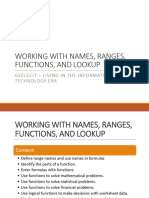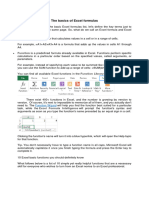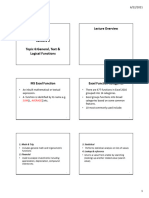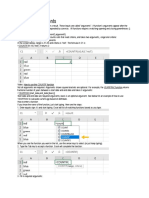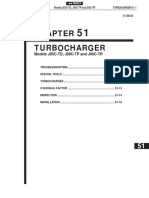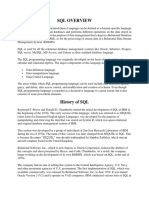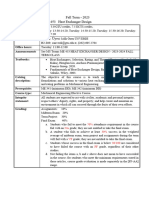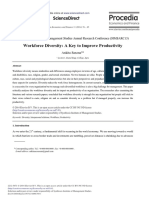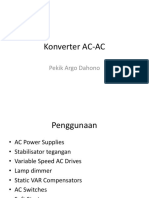0% found this document useful (0 votes)
26 views30 pagesFormula & Functions
The document provides a comprehensive overview of data manipulation in Excel, focusing on formulas, functions, and logical operations. It includes learning objectives, definitions of formulas and functions, examples of basic operators, and exercises to practice using Excel features. Additionally, it covers cell referencing, logical functions, nesting functions, and practical examples for applying these concepts in real scenarios.
Uploaded by
saatsatryphoseCopyright
© © All Rights Reserved
We take content rights seriously. If you suspect this is your content, claim it here.
Available Formats
Download as PPTX, PDF, TXT or read online on Scribd
0% found this document useful (0 votes)
26 views30 pagesFormula & Functions
The document provides a comprehensive overview of data manipulation in Excel, focusing on formulas, functions, and logical operations. It includes learning objectives, definitions of formulas and functions, examples of basic operators, and exercises to practice using Excel features. Additionally, it covers cell referencing, logical functions, nesting functions, and practical examples for applying these concepts in real scenarios.
Uploaded by
saatsatryphoseCopyright
© © All Rights Reserved
We take content rights seriously. If you suspect this is your content, claim it here.
Available Formats
Download as PPTX, PDF, TXT or read online on Scribd
/ 30



















